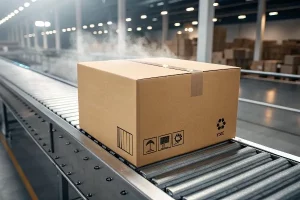Packaging Quality Control: Ensure Your Packaging Meets ISO Standards
Discover how to enhance your packaging quality through effective quality control measures, compliance with ISO standards, and a comprehensive packaging quality control checklist. This essential guide will help you ensure your packaging meets the highest quality standards.
Packaging is more than just a container; it's the face of your product. As a leading packaging manufacturing plant, I've seen firsthand how crucial packaging quality is to both brands and consumers. This article will delve into the importance of контроль качества in the packaging industry and provide insights on how to ensure your packaging meets rigorous standards.
Оглавление
Understanding Packaging Standards
Packaging standards are guidelines and quality standards set to ensure that упаковочные материалы meet specific criteria.
- Importance: They ensure that the packaging meets safety, quality, and functionality requirements.
- Benefits:
- Consistent product quality
- Enhanced consumer trust
- Compliance with regulations
Packaging standards are crucial in maintaining the integrity and performance of packaging throughout its lifecycle.

Why Compliance Matters in Packaging
Compliance with packaging regulations is non-negotiable.
- Legal Requirements: Packaging must adhere to local and international laws.
- Safety Standards: Compliance ensures safety standards are met, protecting consumers.
- Consequences of Non-Compliance:
- Legal penalties
- Damaged reputation
- Financial losses
By ensuring compliance, companies protect their brand and consumers.
The Role of Quality Control in Packaging
Quality control is the process of ensuring products meet the required quality standards.
- Key Aspects:
- Inspection of упаковочные материалы
- Testing for durability and performance
- Monitoring production processes
Implementing robust контроль качества measures helps in delivering packaging products of consistent quality.
Quality Standards in the Packaging Industry
The packaging industry follows several quality standards to maintain excellence.
- ISO Standards: International benchmarks for quality assurance.
- Industry Standards: Specific criteria set by industry bodies.
- Company Standards: Internal standards tailored to company objectives.
Adhering to these standards ensures that packaging meets both regulatory and customer expectations.
Ensuring Packaging Quality in Food Packaging
Food packaging has unique requirements due to health and safety concerns.
- Hygiene: Packaging materials must be food-safe.
- Integrity: Prevent contamination and spoilage.
- Compliance: Follow food safety regulations and packaging regulations.
By focusing on контроль качества, we ensure that food packaging meets strict quality and safety standards.
Selecting the Right Packaging Material
Choosing the appropriate packaging material is critical.
- Factors to Consider:
- Product type
- Environmental impact
- Cost-effectiveness

- Common Materials:
- Cardboard: Versatile and recyclable.
- Plastic: Durable but environmental concerns exist.
- Glass: Premium feel but fragile.
Selecting the right material ensures that the packaging meets the desired quality and performance.
Creating a Packaging Quality Control Checklist
A packaging quality control checklist is a valuable tool.
- Components:
- Material inspection
- Design verification
- Compliance checks
- Testing procedures
Example Checklist:
ItemCheckedMaterial Quality✅Design Accuracy✅Compliance with Standards✅Performance Testing✅Packaging Meets Specifications✅
This checklist ensures that all aspects of packaging are evaluated systematically.
ISO Standards and Their Impact on Packaging
ISO standards provide a framework for quality and safety.
- ISO 9001: Focuses on quality management systems.
- ISO 14001: Addresses environmental impact.
Benefits:
- Consistent product quality
- Improved quality assurance
- Enhanced customer satisfaction
By complying with ISO standards, packaging manufacturers demonstrate their commitment to excellence.

Types of Packaging and Their Quality Requirements
Different types of packaging have specific requirements.
- Primary Packaging: Direct contact with the product.
- Quality Standards: Must be safe and non-reactive.
- Secondary Packaging: Groups primary packages.
- Quality Standards: Provides protection and branding.
- Tertiary Packaging: Bulk handling and transport.
- Quality Standards: Durable and cost-effective.
Understanding these requirements helps in designing packaging that meets all quality standards for packaging.
How Packaging Manufacturers Adhere to Standards
Packaging manufacturers implement strategies to meet standards.
- Implementing Quality Management Systems: Ensures processes are aligned with quality standards.
- Regular Testing and Quality Assurance: Validates the performance of упаковочные материалы.
- Staying Updated with Regulations: Keeps them compliant with changing packaging regulations.
By adhering to packaging standards, manufacturers deliver packaging solutions that meet market needs.
FAQs
What is the importance of packaging quality control?
Packaging quality control ensures that products are safely delivered to consumers, maintaining product quality and brand reputation.
How do ISO standards affect packaging?
ISO standards provide guidelines for quality assurance, helping companies produce packaging that meets international quality standards.
What materials are commonly used in packaging?
Common упаковочные материалы include cardboard, plastic, glass, and metals, each with its unique properties and applications.
How can I ensure compliance with packaging regulations?
By staying informed about packaging regulations and implementing a контроль качества system, you can ensure compliance.
Why is a packaging quality control checklist important?
It provides a systematic approach to verify that all aspects of packaging meet the required standards.
What role does packaging play in food safety?
Food packaging protects the product from contamination and preserves its quality, making quality and safety paramount.
Conclusion
Ensuring the quality and safety of packaging is essential in today's competitive market. By understanding packaging standards, implementing robust контроль качества measures, and complying with ISO standards, companies can deliver packaging solutions that meet and exceed expectations.
Ключевые выводы
- Quality Control is vital in maintaining packaging quality.
- Compliance with packaging regulations protects consumers and brands.
- Selecting the right packaging material enhances product performance.
- ISO standards provide a framework for excellence.
- A packaging quality control checklist ensures systematic quality assurance.
For top-notch packaging that meets all quality standards, explore our range of Customized Packaging Boxes. We're dedicated to providing packaging solutions that meet your specific needs.
Related Products:
- Упаковочные коробки с рукавами: Elegant and functional design.
- Картонные коробки: Versatile and eco-friendly.
- Коробки для упаковки пищевых продуктов: Safe and compliant food packaging solutions.
- Индивидуальные коробки с откидной крышкой и магнитным замком: Premium quality for luxury products.
- Упаковка для электроники: Durable and protective.








